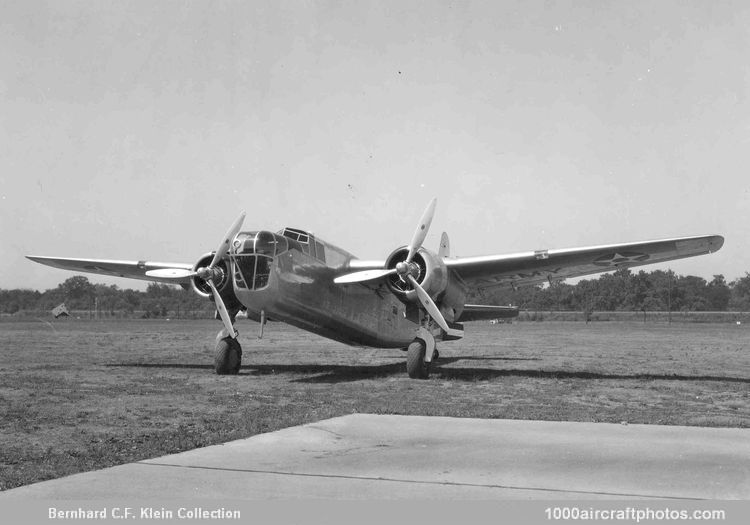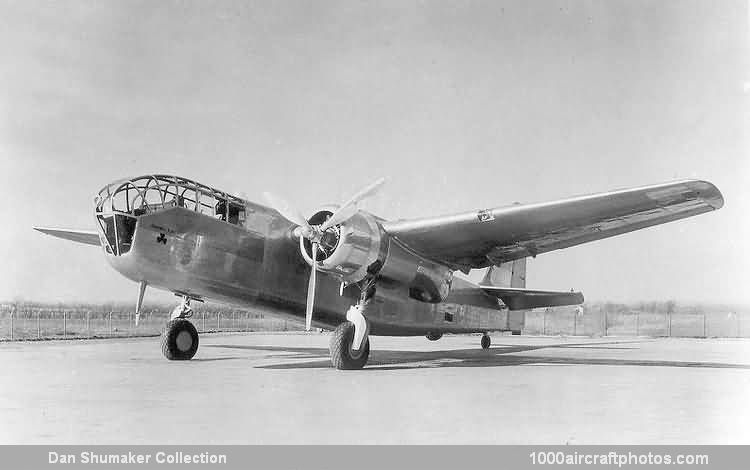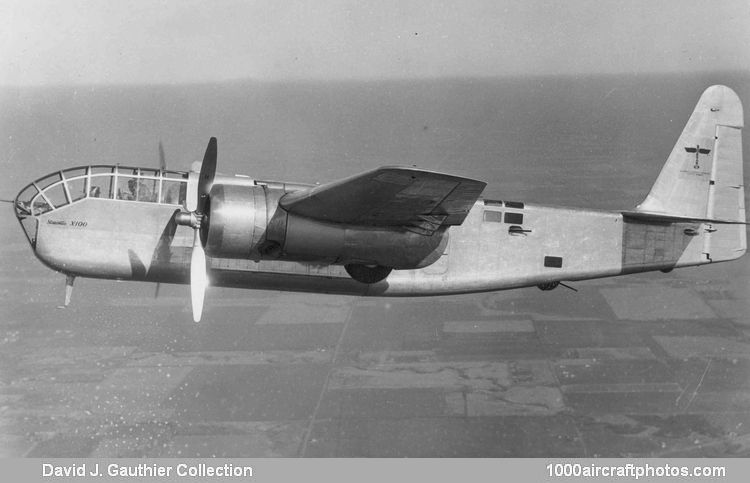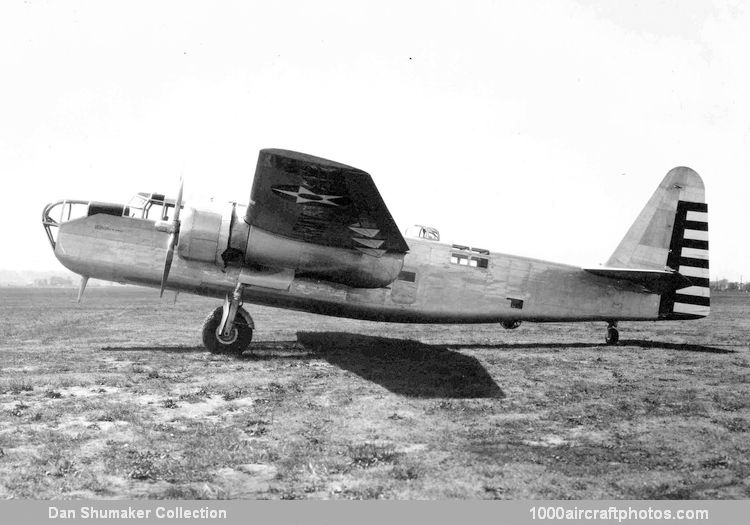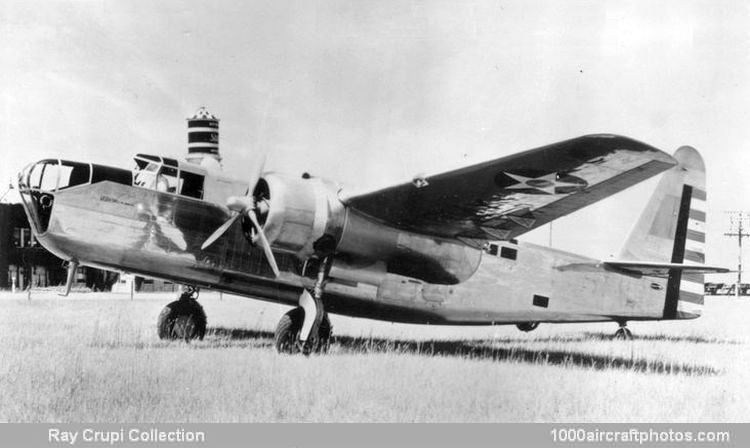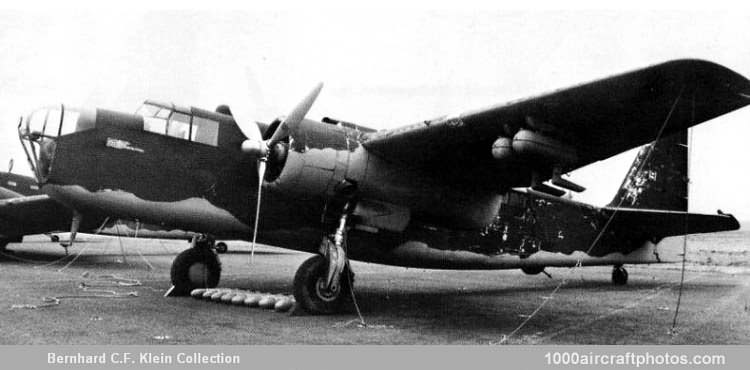BERNHARD C.F. KLEIN MEMORIAL COLLECTION
No. 9697. Stearman X-100 XA-21 (40-191 c/n 100000) US Army Air Corps
01/31/2010. Remarks by
Johan Visschedijk: "The Stearman Company had undertaken the design of a new twin-engine light bomber for a US Army attack aircraft competition and completed it after becoming a Boeing division. Normal crew seating was for three, a bombardier, the pilot, and a radioman/ gunner, but an additional crew member could be carried.
X-100 (
Dan Shumaker Collection)
The X-100 was a multiple milestone for Stearman, in that it was not only the first twin-engine design turned out in the plant, but the first all-metal structure and the first monoplane.
X-100 with fully-feathered propeller (
David Gauthier Memorial Collection)
It incorporated other features new to the industry at large, too, including fully-feathering constant-speed propellers, electrically-actuated retractable landing gear, integral fuel tanks, and sealed compartments in the outer wing panels, central fuselage, and empennage for flotation in case of forced landing in water.
Armament consisted of five hand-operated 0.30 in (7.62 mm) machine guns. The rear gunner could operate four, one in a dorsal turret, one on each side firing from a flexible socket, and one in a fixture on the bottom, while the bombardier operated a single one in a flexible mounting in the nose. A further four forward-firing 0.30 inch machine guns could be installed in the wing, and a maximum bomb load of 2700 lb could be carried internally. In the interest of streamlining, the original nose contour made an un-broken line with the top of the fuselage, the pilot looking forward through the bombardier's station as on the later B-29.
X-100 with stepped windshield (
Dan Shumaker Collection)
However, this was soon modified to the standard step-down windshield configuration of contemporary transports and bombers. The power plant was the new and experimental Pratt & Whitney R-2180-S1AI-G, normally rated at 1,150 hp but capable of delivering 1,400 hp for take off. This engine was not developed further and no other aircraft used it. The Stearman X-100 and the Martin Model 167 XA-22 Maryland were tested by the Army but neither aircraft went into production for the US military.
X-100 XA-21 (40-191) (
Ray Crupi Collection)
However, the X-100 was purchased by the USAAC, and designated XA-21 with s/n 40-191, was delivered in September 1939.
X-100 XA-21 painted in military colors
After it was bought by the USAAC, the XA-21 was given a washable color scheme, but was void of any marking apart from the serial and type stenciled on the nose. It participated in one of the USAAC War Games, as indicated by the bombs below the wing and on the ground.
Thereafter it was used as a flying laboratory at Wright Field, Ohio, the ultimate fate of the aircraft is unknown."
